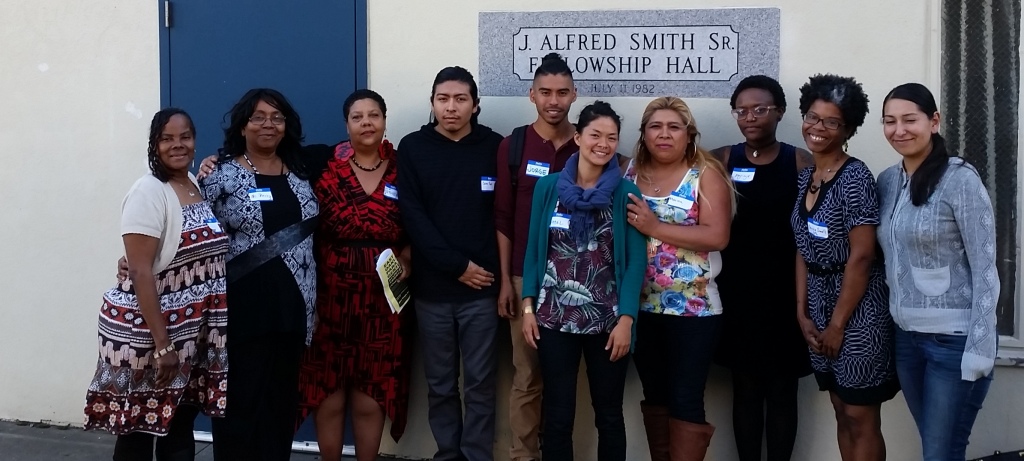Community Pushes for AC Transit Project without Displacement
Mar 21, 2015
Posted in Community, Economic Development, Environment, Gentrification, Labor, Responsive Government, Transportation

By Nikolas Zelinski
Neighbors gathered at Allen Temple Baptist Church in East Oakland Wednesday night to discuss their concerns about the new AC Transit project, called Bus Rapid Transit (BRT).
The project will build high-speed bus service along International Boulevard between downtown Oakland and San Leandro, operating in the middle of the roadway.
Since the project was first announced, concerns have been raised the number of bus stops will be reduced and parking on International will be eliminated, negatively impacting seniors and people with disabilities, as well as small business and their customers.
One of the evening’s panelists, Nehanda Imara of Communities for a Better Environment (CBE), said that she knows first-hand how large-scale transportation infrastructure projects have the power to tear up neighborhoods, examining the negative impacts of BART and Highway 880.
She said that these developments rarely do anything to help the people that live around the projects. “(BRT) must benefit the people who already live here,” Imara said.
Another panelist was Isaiah Tony of the Alliance of Californians for Community Empowerment (ACCE) said that BRT does not respond adequately to current complaints from bus riders.
“The stuff I hear from riders is the bus doesn’t come on time, or I’m late to work. I’ve even talked to people who have been fired from their jobs because the bus wasn’t on time for five days in a row,” said Tony.
“I’ve heard stories about people in wheelchairs being passed by a bus because it was full,” he continued. “When we turn around and look at the BRT, does it solve the problems that we’re raising? A little bit yes, and a little bit no.”
The BRT will be a 9.5-mile public bus line that is designed to reduce traffic congestion and improve efficiency of bus service by creating bus-only lanes, reducing the number of bus stops, reducing parking, and constructing centralized bus stations.
These stations will be placed in the middle of the street, and around one third of a mile apart. Stations will feature level platforms, overhangs with powerful lighting, and bus ticket machines.
Responding to the concerns that were raised, AC Transit Media Affairs Manager Clarence L. Johnson said, “AC Transit is not necessarily trying to promote gentrification. We are primarily interested in making sure that the corridor doesn’t become impassible in the next 10-20 years.”
Johnson also confirmed that around 500 parking spaces will be lost as a result of the project but added that the number will likely be much lower by the time the project is completed.
Also, AC Transit has purchased a few vacant lots to convert into parking areas, so that “there will not be any losses in any crucial commercial area,” according to Johnson.
Construction is set to begin by the end of 2015 and fully operable by November 2017.
The Allen Temple meeting was co-hosted by Just Cause/Causa Justa, Community Planning Leadership program (CPL), and the Oakland Sustainable Neighborhood Initiative (OSNI).